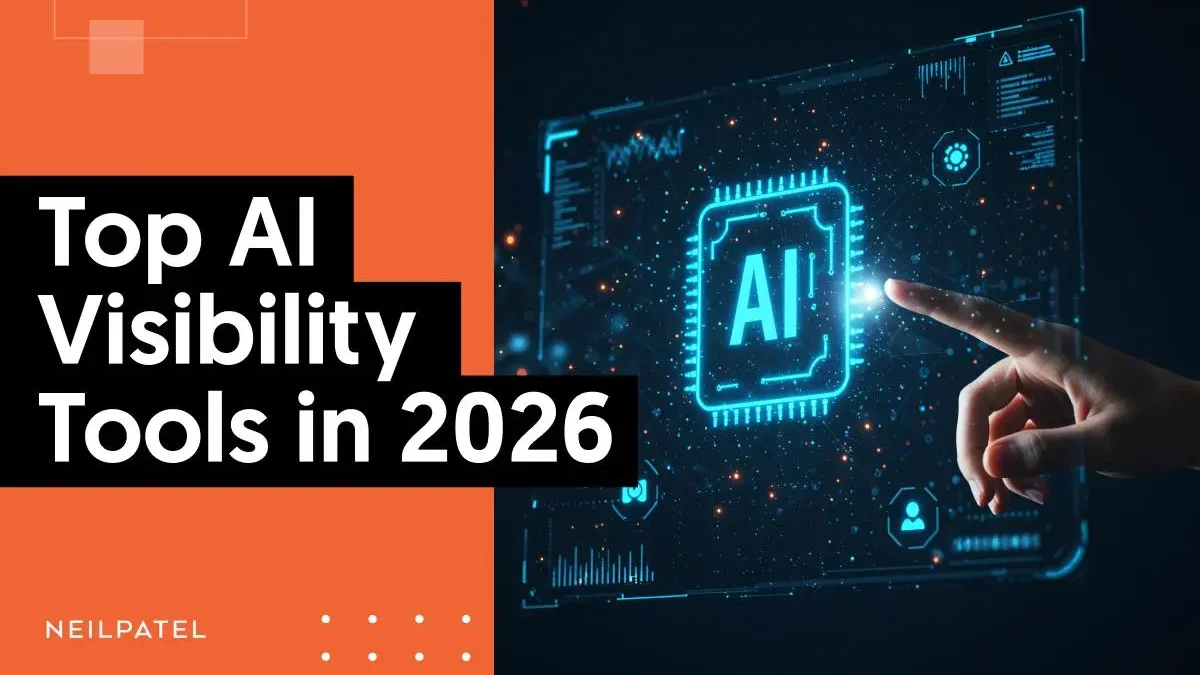5 Emerging AI Visibility Tools to Watch in 2026
SEO and digital marketing are entering a new phase where artificial intelligence does more than analyze data. It interprets intent, predicts performance, and even recommends strategies in real time. The race among platforms to provide the smartest AI visibility insights is heating up, and 2026 is shaping up to be a breakthrough year. For SEO professionals, understanding which tools are emerging as the next big thing can help you stay ahead of changing algorithms and evolving search behavior.
Here are five emerging platforms that deserve attention in the coming year. Each one is redefining how marketers measure visibility and act on insights.
Ubersuggest
Ubersuggest continues to evolve rapidly, especially with its latest AI integration for keyword intelligence and trend prediction. In 2026, the platform is introducing a feature that monitors Google’s SERP volatility and correlates it with changes in engagement metrics. This means marketers can understand not just where rankings shift, but why.
Its upgraded AI writing assistant also learns from your past projects, suggesting phrasing and structure improvements that align with Google’s content quality signals. For smaller teams that cannot afford enterprise software, Ubersuggest remains a solid and affordable option that provides both visibility tracking and content recommendations in one place.
MarketMuse Next
MarketMuse has been around for years, but its Next platform is transforming content strategy through AI-generated predictions. Instead of only showing how well your content is optimized, it now forecasts your likelihood of ranking based on entity coverage, content depth, and competitor freshness.
This predictive scoring system uses a neural model that learns from historical search outcomes. It identifies when a topic is trending upward before it becomes competitive, giving SEOs a head start. For agencies managing dozens of clients, this type of proactive insight means more efficient content planning and faster wins.
ContentKing Predict
ContentKing Predict is another tool that is gaining momentum. Originally focused on real-time SEO auditing, it now includes AI-driven visibility forecasting. By combining technical monitoring with SERP volatility data, the platform can alert users when a page is likely to lose visibility within days.
It also connects with analytics and CRM systems, so you can see how technical issues affect both rankings and conversions. The Predict feature offers automatic prioritization, helping teams focus on fixes that will have the biggest visibility impact. This type of automation has the potential to replace manual audit cycles completely.
CanIRank 2.0
The relaunch of CanIRank 2.0 has turned heads across the SEO industry. What makes it interesting is its conversational AI layer, which allows users to ask questions like, “Why did my organic traffic drop last month?” and receive detailed, data-backed answers.
The system evaluates hundreds of ranking factors in context, then ranks them by influence. Instead of telling you that your rankings fell, it might explain that “competitor content freshness” or “anchor text distribution” contributed most to the decline. This level of clarity gives SEOs the kind of diagnostic feedback that was once only possible through manual analysis.
As search algorithms grow more opaque, this conversational style of reporting will likely become standard among AI visibility platforms.
SEOClarity Pulse
SEOClarity Pulse focuses on the enterprise side of search visibility and automation. Its AI detects subtle correlations between SERP changes, content updates, and external signals such as social mentions and backlinks. The result is a holistic visibility model that shows how off-site activity influences on-site rankings.
Pulse also includes predictive alerts for ranking volatility. When an algorithm update begins rolling out, it flags which pages or keyword groups are most at risk, allowing teams to respond before traffic drops. This proactive capability makes it especially valuable for large brands managing thousands of URLs across multiple markets.
The Role of AI in Modern Visibility Tracking
The rise of these new platforms reflects a larger shift in SEO philosophy. Visibility is no longer a static metric that tracks where you appear in search results. It is an evolving signal that connects technical health, content performance, and user behavior.
Modern tools now process millions of data points across devices and regions in seconds. They reveal patterns that human analysts would miss, such as correlations between bounce rates, click-through rates, and query type changes. The insight gained from this synthesis is what gives marketers a strategic advantage.
AI also helps democratize high-level SEO analysis. Smaller businesses that once relied on intuition or manual tracking can now compete using tools that provide the same data depth as enterprise platforms. By integrating automation, forecasting, and content intelligence, these systems make strategic SEO decisions faster and more accurate.
Why 2026 Will Be a Turning Point
By 2026, visibility tracking will move beyond simple ranking dashboards. The next generation of platforms will use machine learning not just to describe what happened, but to prescribe what should happen next. They will forecast when content needs updates, alert teams to SERP shifts before traffic drops, and recommend ways to regain lost visibility.
This transition will also lead to a new focus on cross-channel visibility. Search, social, video, and even voice data will merge to form a single visibility profile. SEO professionals will be able to see how all digital signals interact in one interface.
That is where AI visibility tools will make the biggest difference. They will turn reactive reporting into predictive intelligence, helping marketers focus on strategy and creativity instead of endless analysis.
The next wave of AI-driven SEO platforms is not about adding more data. It is about providing smarter interpretation. Tools like MarketMuse Next, ContentKing Predict, Ubersuggest, CanIRank 2.0, and SEOClarity Pulse are paving the way for this shift.
Whether you work at an agency, manage in-house SEO, or consult independently, these tools will help you understand visibility in ways that were not possible a few years ago. They will identify opportunities earlier, minimize risk during algorithm updates, and turn raw data into practical, forward-looking insights.
Staying informed and experimenting with emerging technology will be the key to success in 2026 and beyond.




